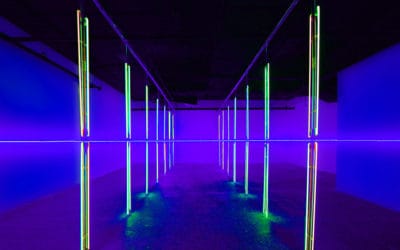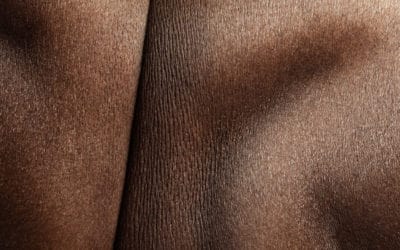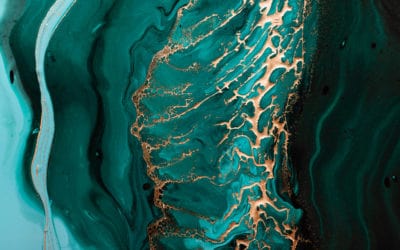CULTURAMA is the new destination for discoverers defending the best of Art, Architecture and Design in order to reinvent your contemporary lifestyle. As a bilingual webmagazine and audiovisual broadcaster with CULTURAMA STUDIO, CULTURAMA explores the trends of 21st century Art and Design, with its exclusive interviews, documentaries, articles, and mini-series. Hundreds of renowned artists have already participated in this adventure. CULTURAMA builds bridges between creators and executives, and as such, it becomes essential.
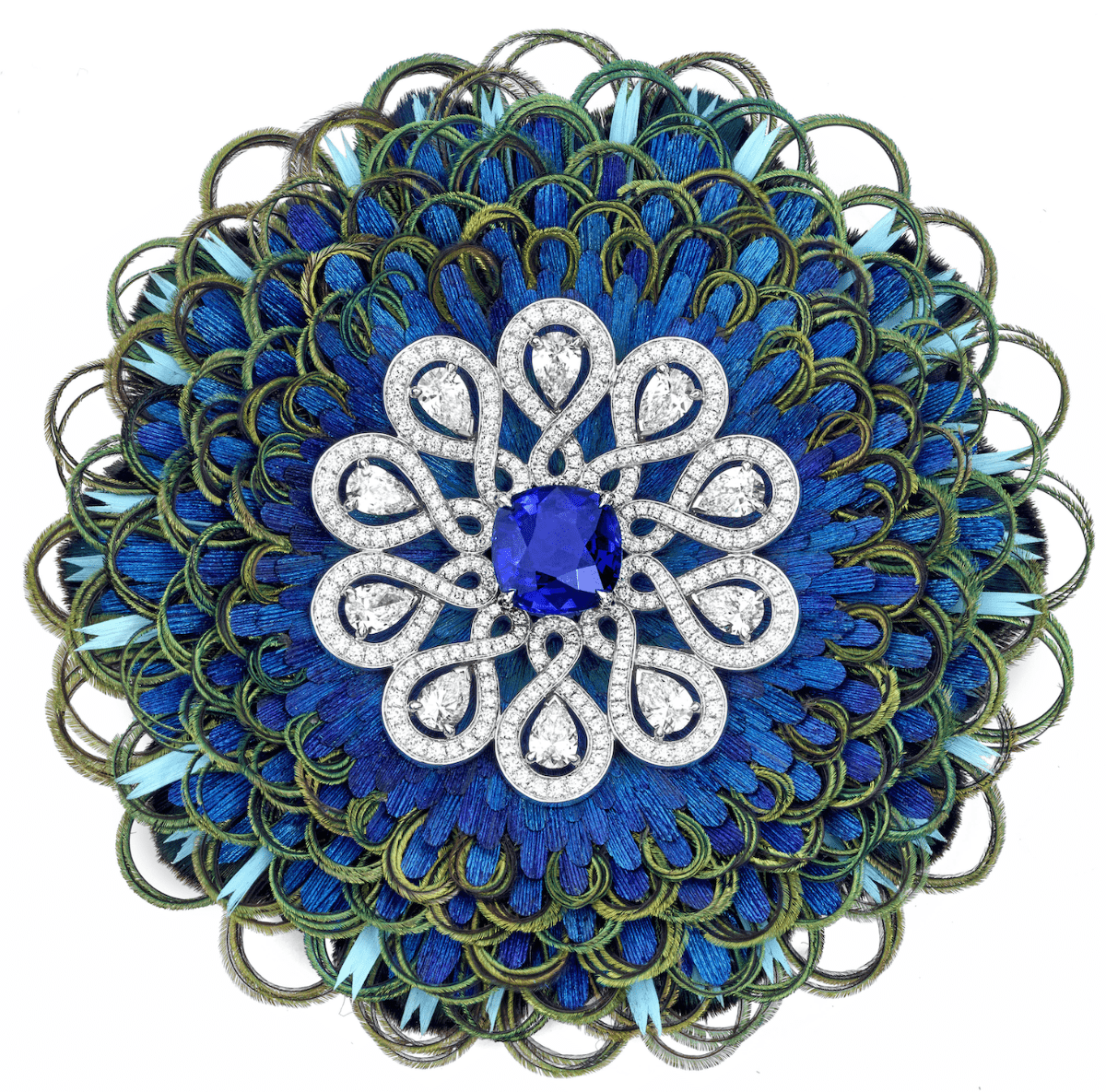
Brooch | 2015 | Photo. Sébastien Coindre | Piaget & Nelly Saunier©
Summary
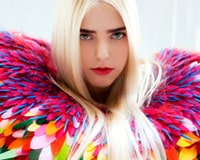
Nelly Saunier
«One should be light like a bird, and not like a feather »

Homemade
A unique experience shared throughout the digital space
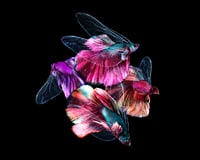
EXPLORER
The best of Art, Architecture and Design of the 21st century.
Editorial
Bright new days

Nelly Saunier implements this singular material throughout her creative work, to pay homage to Mother Nature and the harmony she stands for and which our societies lack.
To start this New Year with joy and happiness, we wish you to carry the freedom, the lightness, and the sweetness of life as an extension of Art!
One has to strive to the lightness of a bird, not of a feather.
Paul Valéry
EXTENDING ART
Nelly saunier
Eric de CULTURAMA: Frédéric Mitterrand once said that your dexterity and imagination show us how the feather is much more than adornment; as a Master of Art since 2008, you immerse us into a dream that brings together matter in the air. How did you get your passion for the feather?
Nelly Saunier: My encounter with this material arose from a very close link with birds. In the first place, it was the unconditional love for this animal kingdom, rooted in my childhood; it determined what followed. The birds, just like the rustling of leaves or the croaking of frogs, participated in the awakening of my senses at a very early age, in the Val-de-Marne, near Paris. All this life nourished my childhood imagination and remains present in my subconscious.
The professional choice was made at the age of 14. This vocation was obvious to me, as manual work has permeated my entire existence.
I have dedicated my life to the development of an ancestral know-how. At the time, only one school trained in this Art. One of my teachers noticed the bubbling energy that animated me and directed me to the School of Applied Arts, where I became a textile designer. Later, as the only professor-plumassier, I worked hard to ensure that this tradition lives and passed on. I got my students to participate in events outside of school to promote our Art department, which is unique in France, and to help people to rediscover the featherwork by showcasing students’ creations. In that way, we have organized, for example, parades at the Sorbonne. Both as an artist and a teacher, I have rebuilt my profession’s image and forged new possibilities for it, ones that it did not yet have. When blurring the borders between natural and artificial, when implementing the Art of trompe-l’oeil and introducing a wholly different vision to the featherwork, new openings emerge, new fields for original creations.
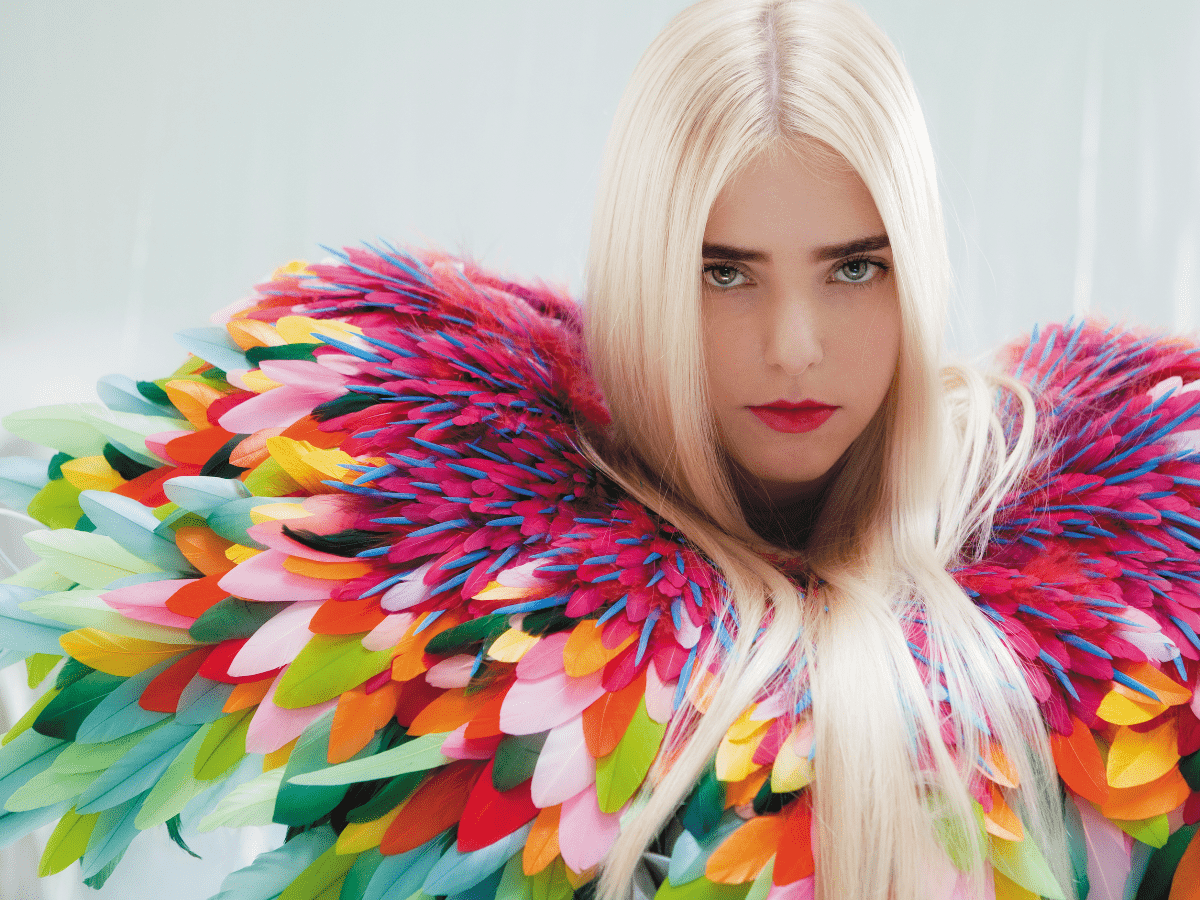
Eric: How do you work? Where lies your path from intuition to execution?
Nelly: When you master a know-how after all these years, a sort of magic manifests itself. For the Transformed Nature series, I have a kind of impetus to find the most suitable material. For example, a willow branch with unusual foliage chosen on a whim confirms that, because it represents the right part of nature. My work translates the natural essence, without copying it completely, staying between hyperrealism and poetic evocation. In the creative process, the obvious comes to light when everything is right, only then it gets done, and it has nothing to do with the craftsmanship. The quality of the result confirms the accuracy of the intuition.
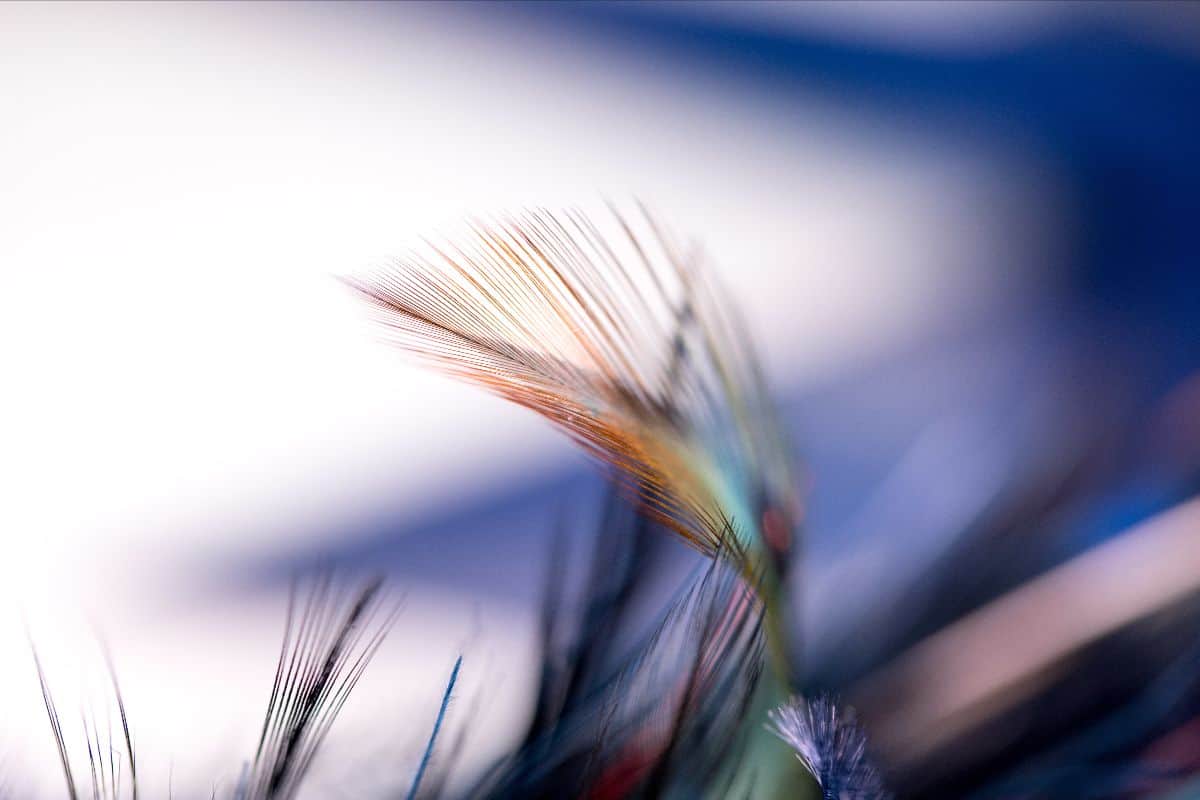
During my visit to the Cité de la Musique to choose the location for this piece, I discovered where was exhibited an Indian string instrument called taus fiddle, a rare piece in the shape of a peacock. The choice of this birdly instrument was thus imposed upon me, with the idea of extracting it from the original collection and then showcasing the result to the public. The traveler’s tree creates an ideal match since it is also nicknamed the peacock plant, which I was unaware of at the time of my choice, but now it makes sense…
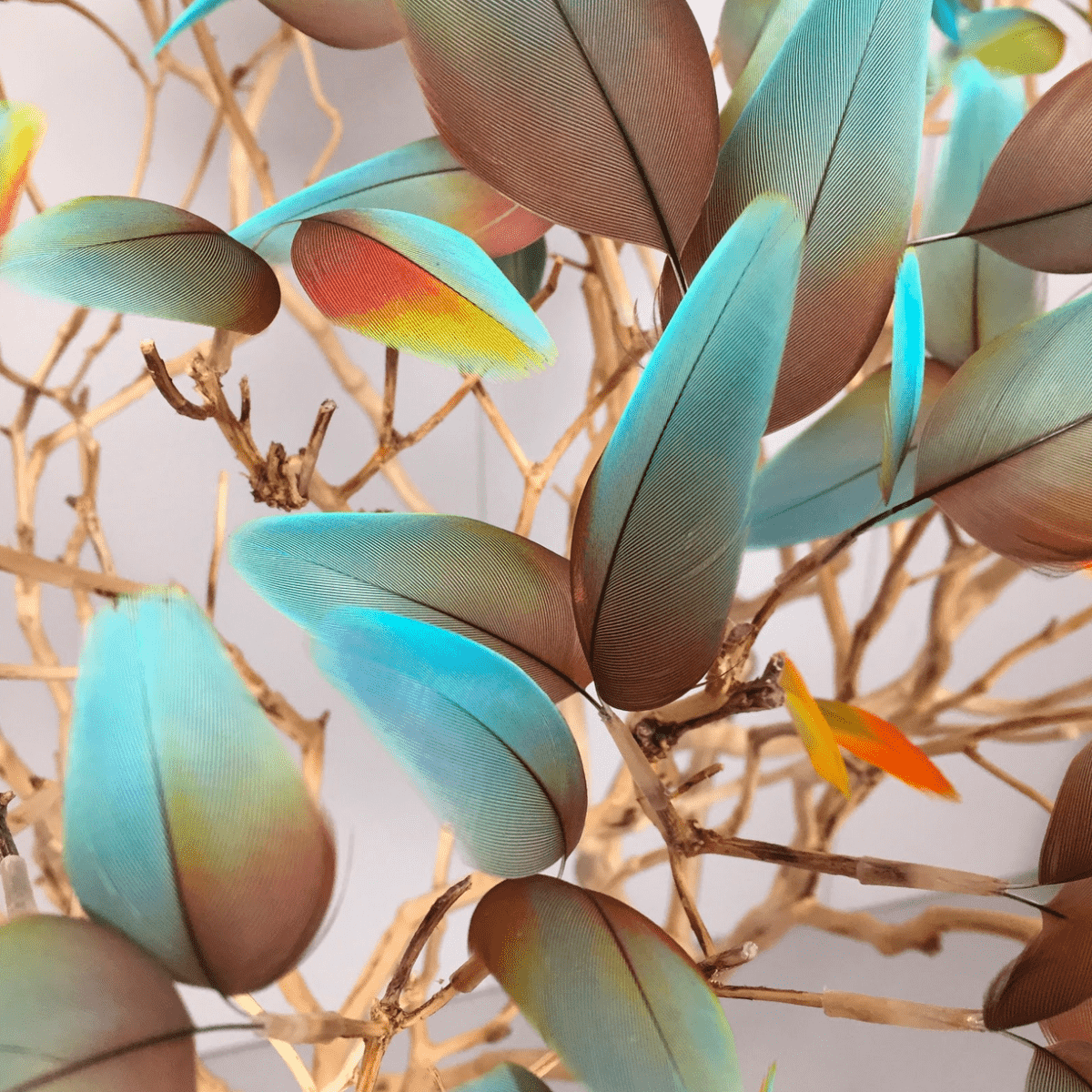
Eric: You also work with fine jewelry. How does your creative process unravel itself?
Nelly: Commissions differ from personal creations in the sense that I have to enter into a given theme. For example, when working on a cuff centered around the theme of the sunset, I research to fit the subject with the corresponding mood. A subtle play of composition allows to evoke the softness of skies and to capture the essence of a particular moment. Sunrays of yellow are our cultural reference when talking about the sun. Yet, at dusk, one feels a form of evanescence, it is a palette of colors and it is in the air; one somehow manages to translate it, to make it tangible. The challenge is to stay proactive while balancing out the subject and the object itself. Sometimes it takes six to eight months of work to bring a project to fruition.
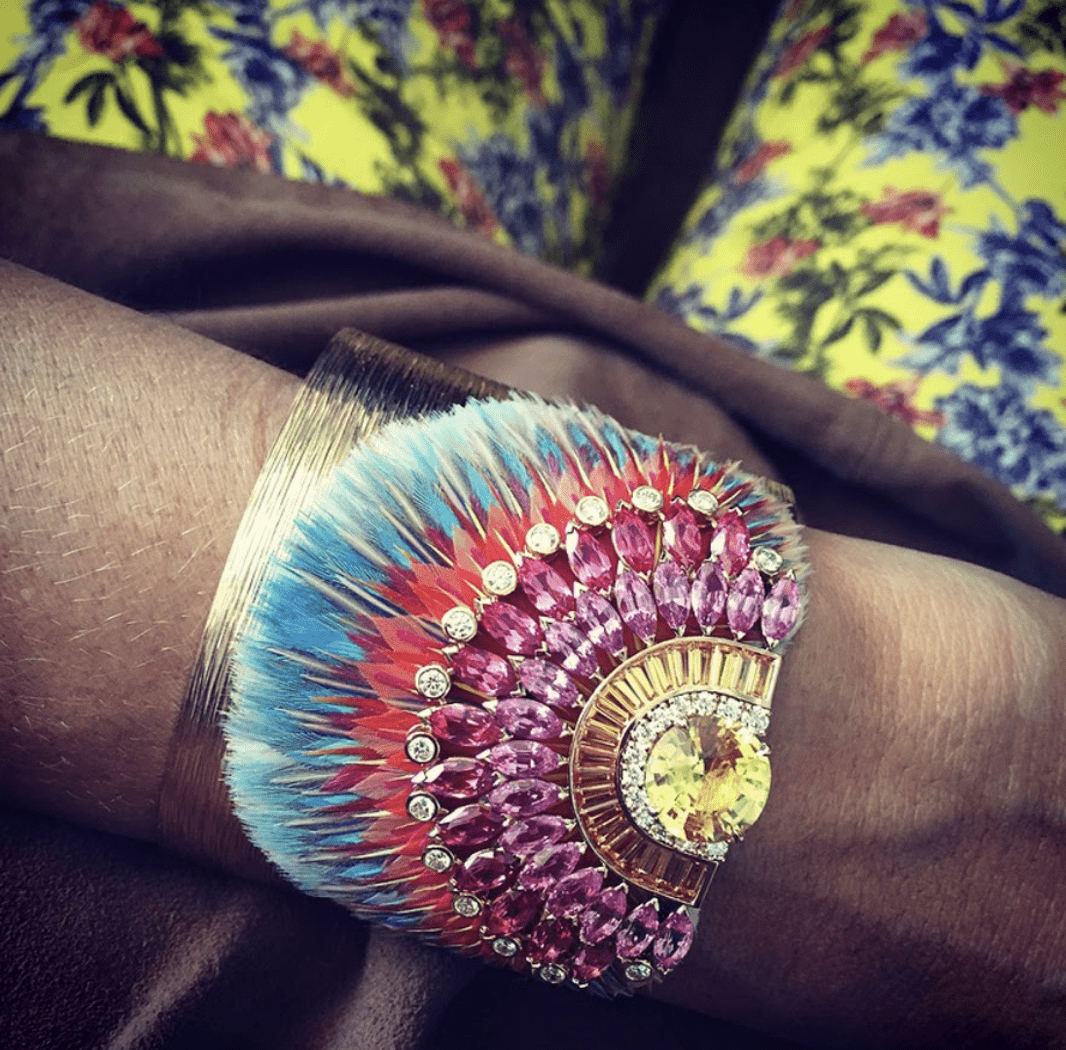
Sunny Side of Life cuff | 2016 | Photo. Stéphanie Rivière | Piaget & Nelly Saunier©
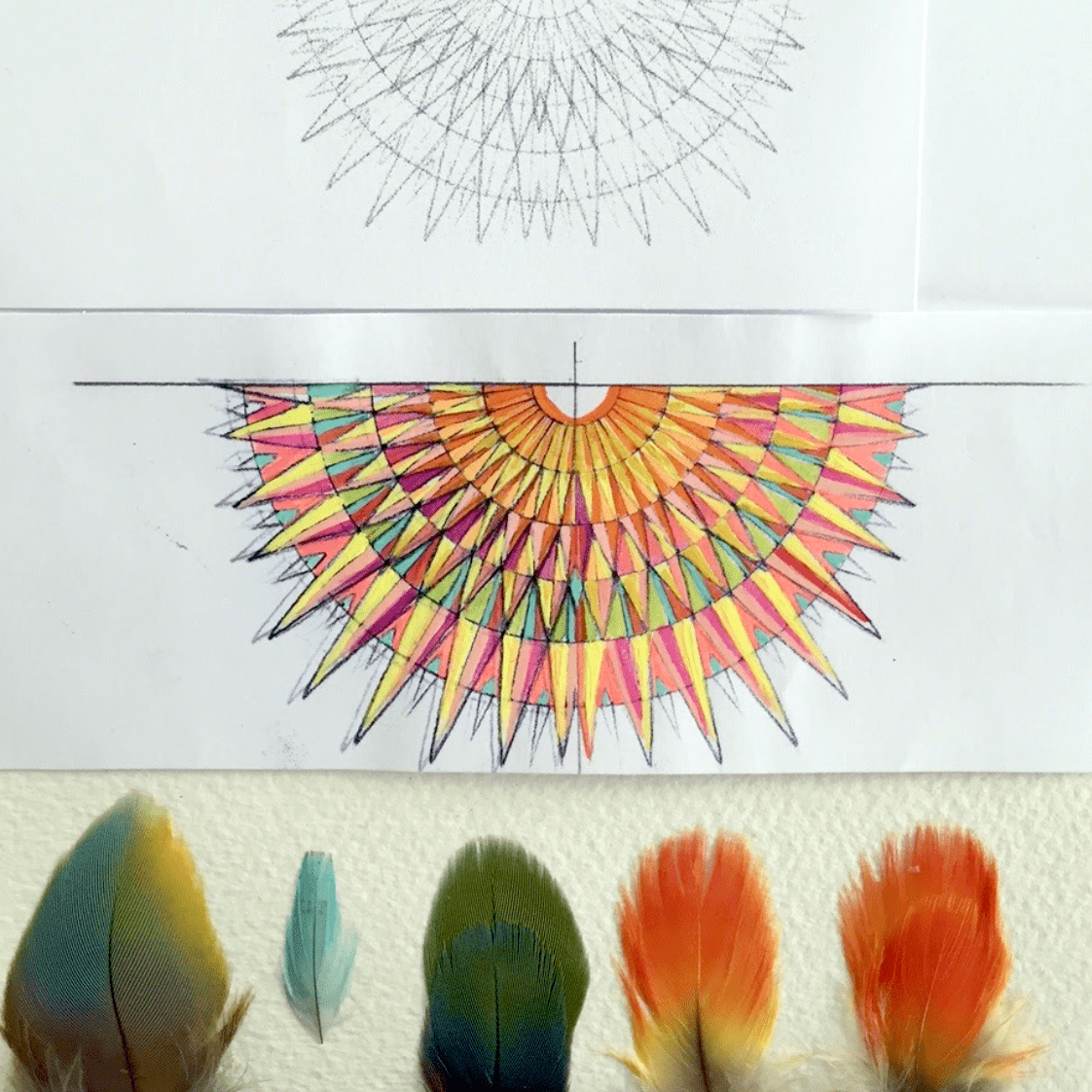
Workshop | 2016 | Nelly Saunier©
Eric: At the Nuit Blanche Kyoto 2015 festival, in collaboration with the Japanese artist and Ikebana Master Shuho Hananofu, you created a unique live show entitled Wonders, where your feather Art was merged with that of Ikebana. Can you tell us about this experience?
Nelly: My 2015 artist residency at Villa Kujoyama lasted four months and solidified my personal choices. The feather underlies the essence of what nourishes me, of that nature that cradled my childhood and to which I pay homage. Thanks to this unique collaboration with Shuho Hananofu, performer and Ikebana Master, I returned to the heart of nature, at the source of my inspiration. The work and the personality of this woman, who creates performances with plants and flowers, touched me deeply. Ikebana implements the symbolism behind each natural element to give the impression that nature has expressed itself in a refined way.
Through this collaboration, that I still think about, the idea — a poetic intention — for the Transformed Nature series was born. The technical complexity is hidden under the visible: a mixture of know-how, desire to transmit emotions and to share with others. The work’s objective is precisely to reach something obvious. Its intricacies and colors are there to heal, almost, in the sense that they refer to a strong link with nature, in an extremely brutal world. I am very sincere in what I do, and I do feel the vital need to lead the audience to beauty.
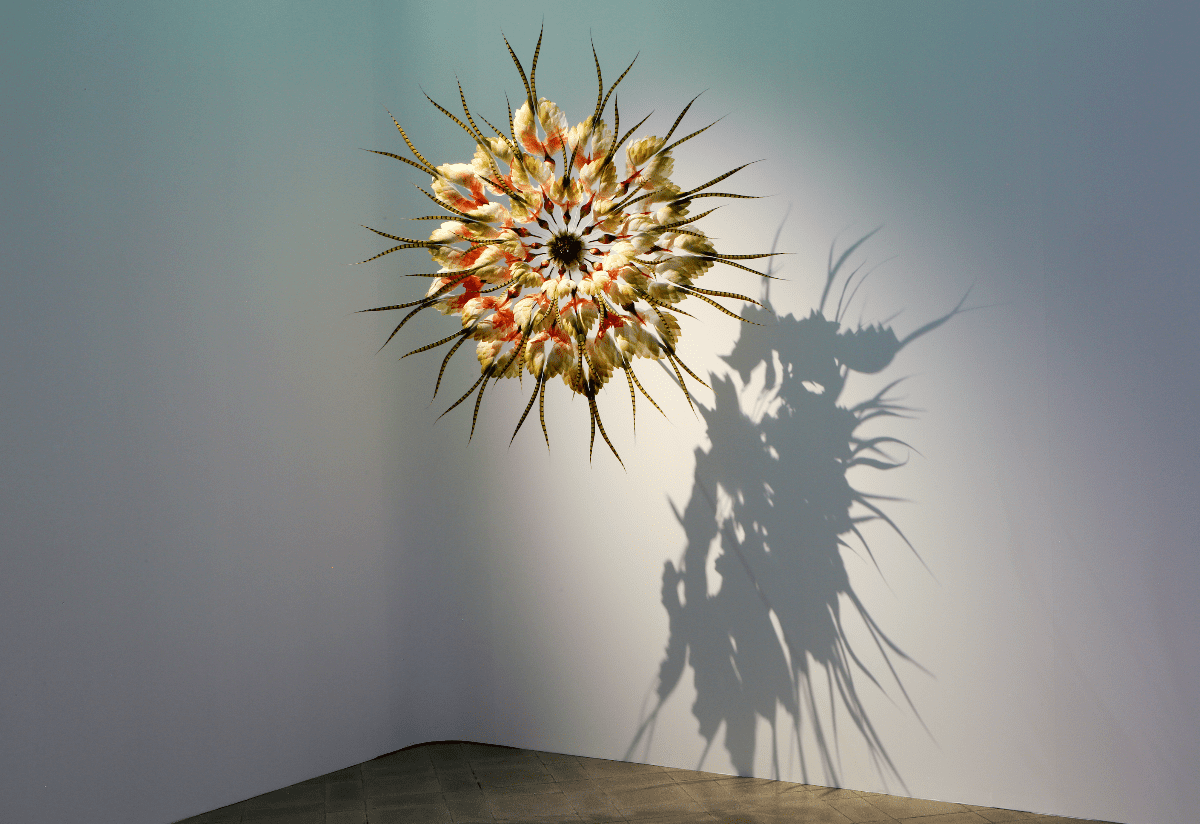
Eric: Does the feather represent freedom?
Nelly: First of all, it’s an emotion. For me, the feather represents softness, lightness, delicacy, and beauty; it relieves me of the burdens of this often violent world; its symbolism goes wonderfully with the idea of freedom. Imagination at its full potential, thoughts diving through the sky, the allegories associated with the feather are powerful, and even more so today. Then, it is a feeling. The feather is a material of immense richness that creates constant wonder. Today anyone can see the beauty of feathers, anyone can use them, and maybe I helped make this trend reality. I never felt any barrier when using the feather, whatever the theme.
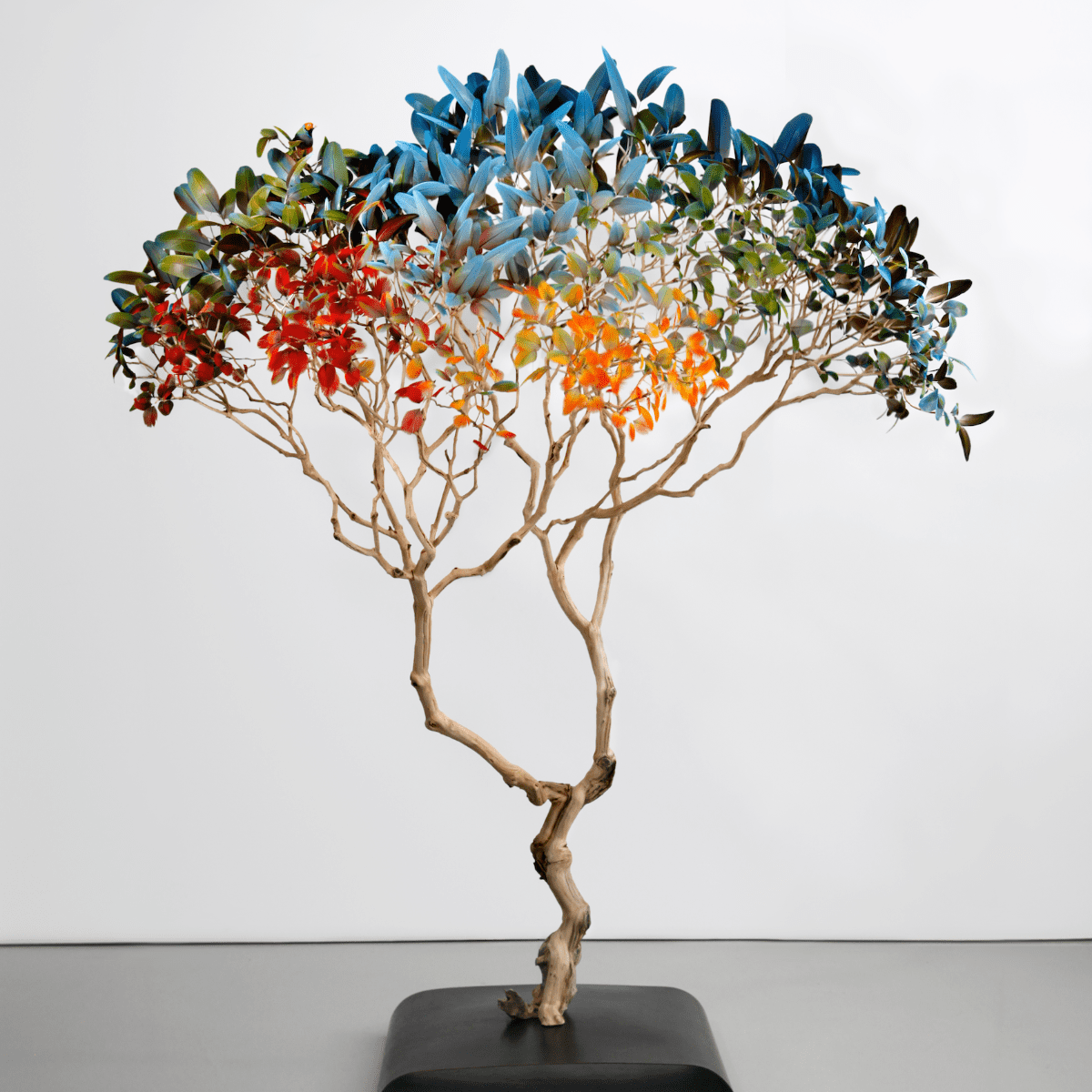
Eric: How do you find your feathers?
Nelly: I started as a child; I gleaned jay feathers fallen during the molting, through the woods and hidden paths. My sources are multiple: from breeders to resellers and suppliers, private and public ones. The more I share and strengthen new acquaintances, the richer my collection becomes, all while respecting species conservation regulations. There are often beautiful stories, like this woman who, out of love and wonderment for her bird, kept all the feathers that had fallen during the moltings. She told me that she didn’t initially know why she was keeping them.
Only later, after discovering my work and philosophy, she found more meaning in that action of hers. So, she sent me a lifetime of collecting her bird’s feathers. Here’s a more personal anecdote. A parakeet got lost in the wild, then decided to move into my aunt’s residence, who kept all of its fallen feathers. Depending on her mood, she sent to me, for three years, a selected trio of feathers. From this very special collection was born Prémisses du Printemps. Through the contrast between the glistening black of the wet trees and the luminescence of the spring green, I pay homage both to my aunt, now deceased, and to the beauty of that bird.
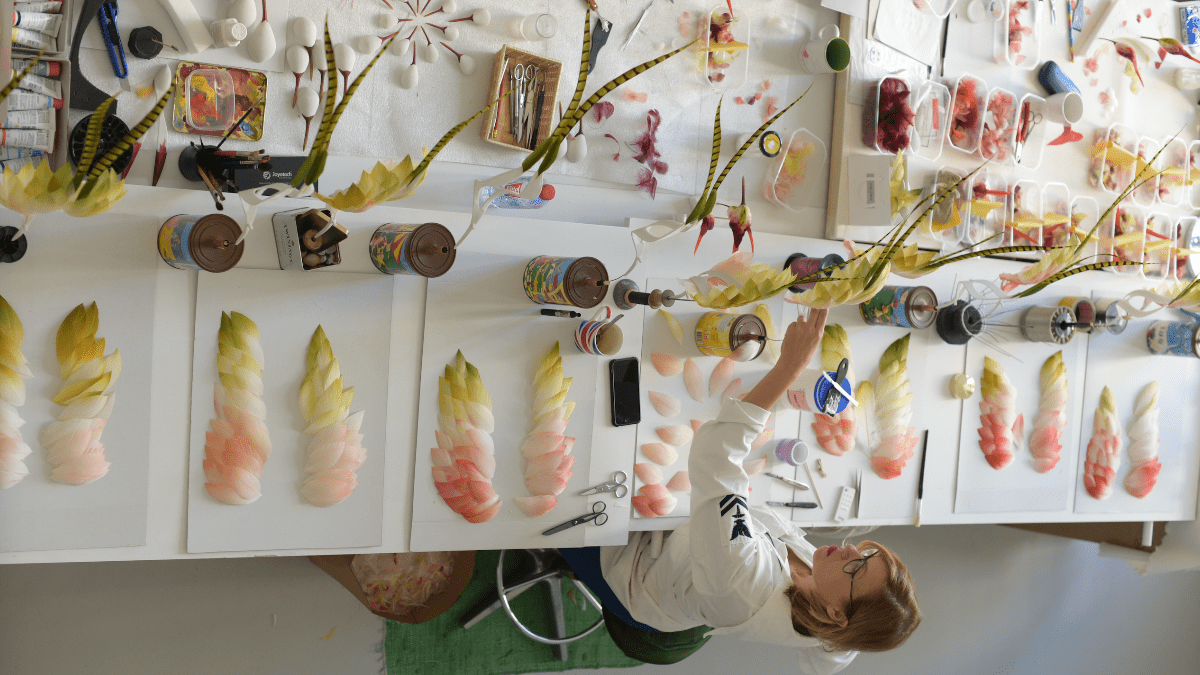
Eric: How many Transformed natures have you created so far? And what are the prospects for the rest of this series?

Nelly: At present, I have a collection of about thirty pieces ranging from 15 cm to 4 m 80. The new perspectives for the series depend on events and exhibitions in dedicated spaces, such as art galleries or museums. The addressed themes always highlight the link that unites us with Nature.
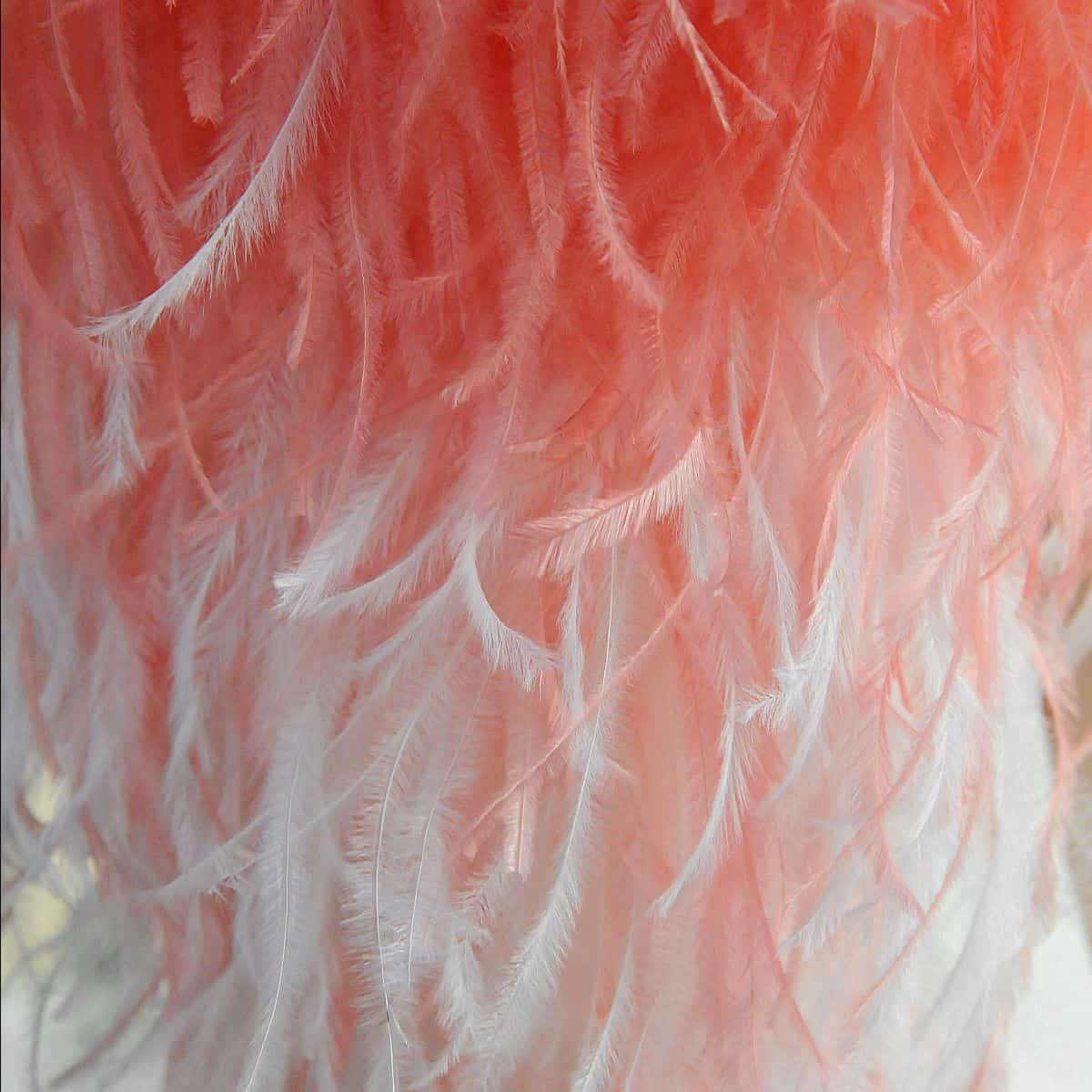
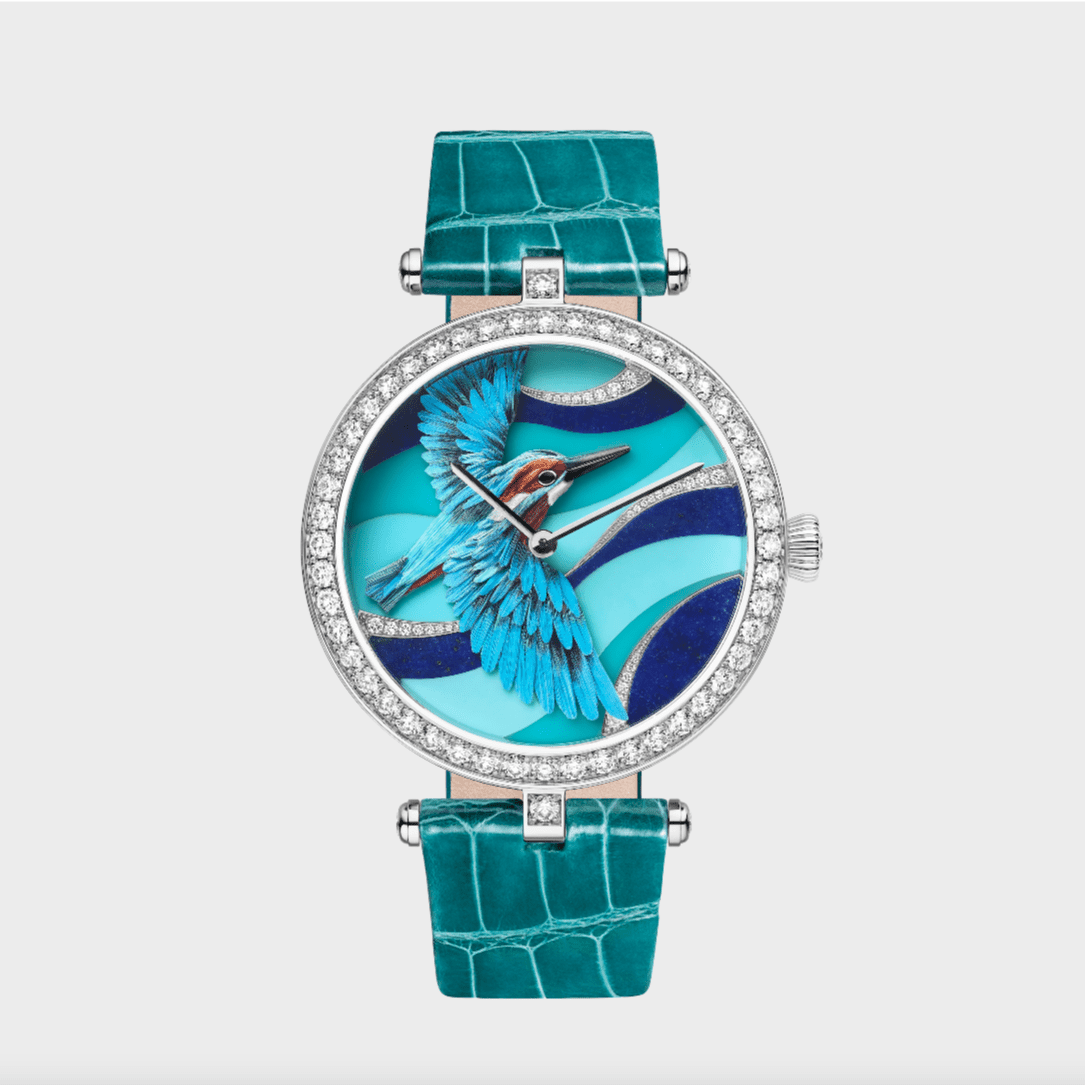
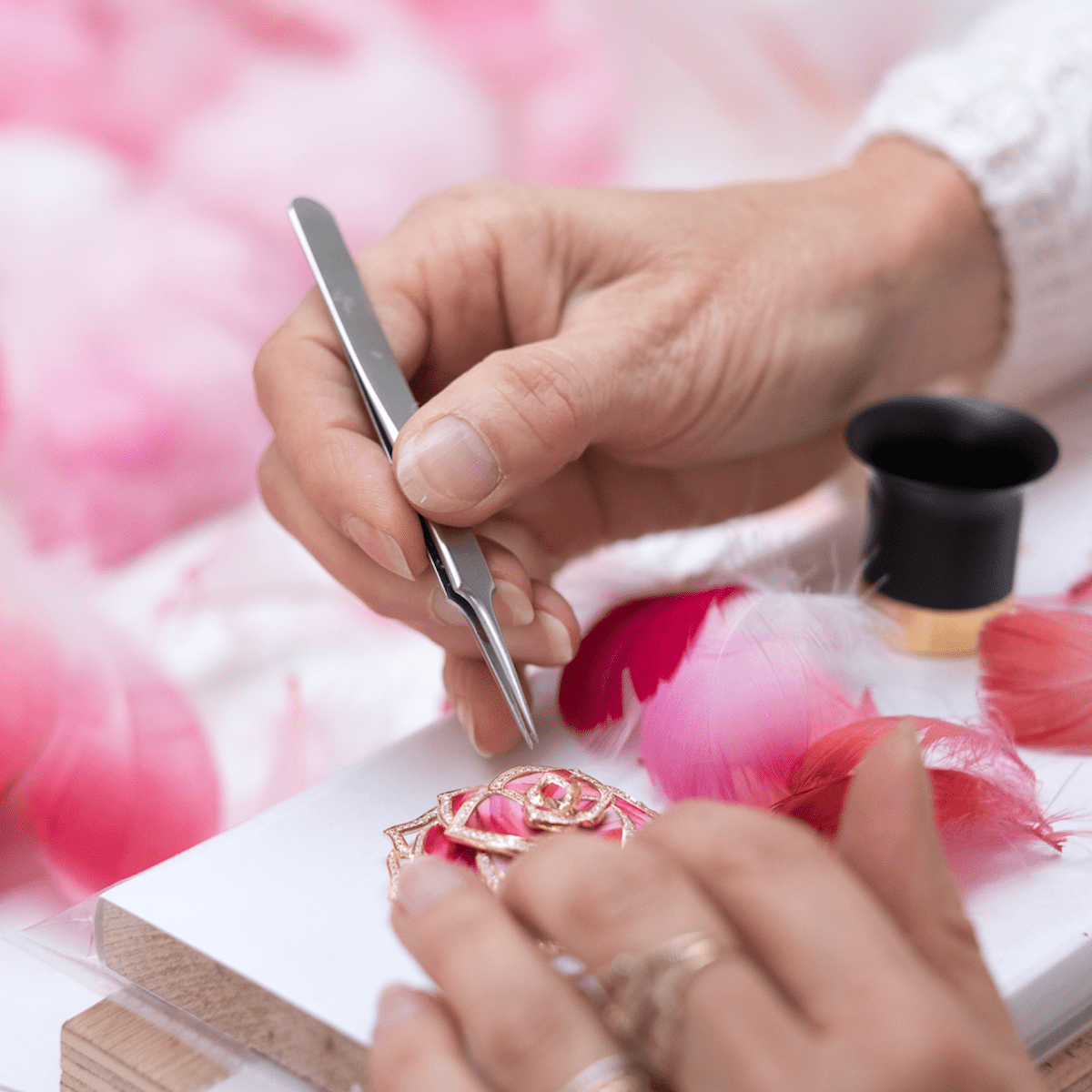
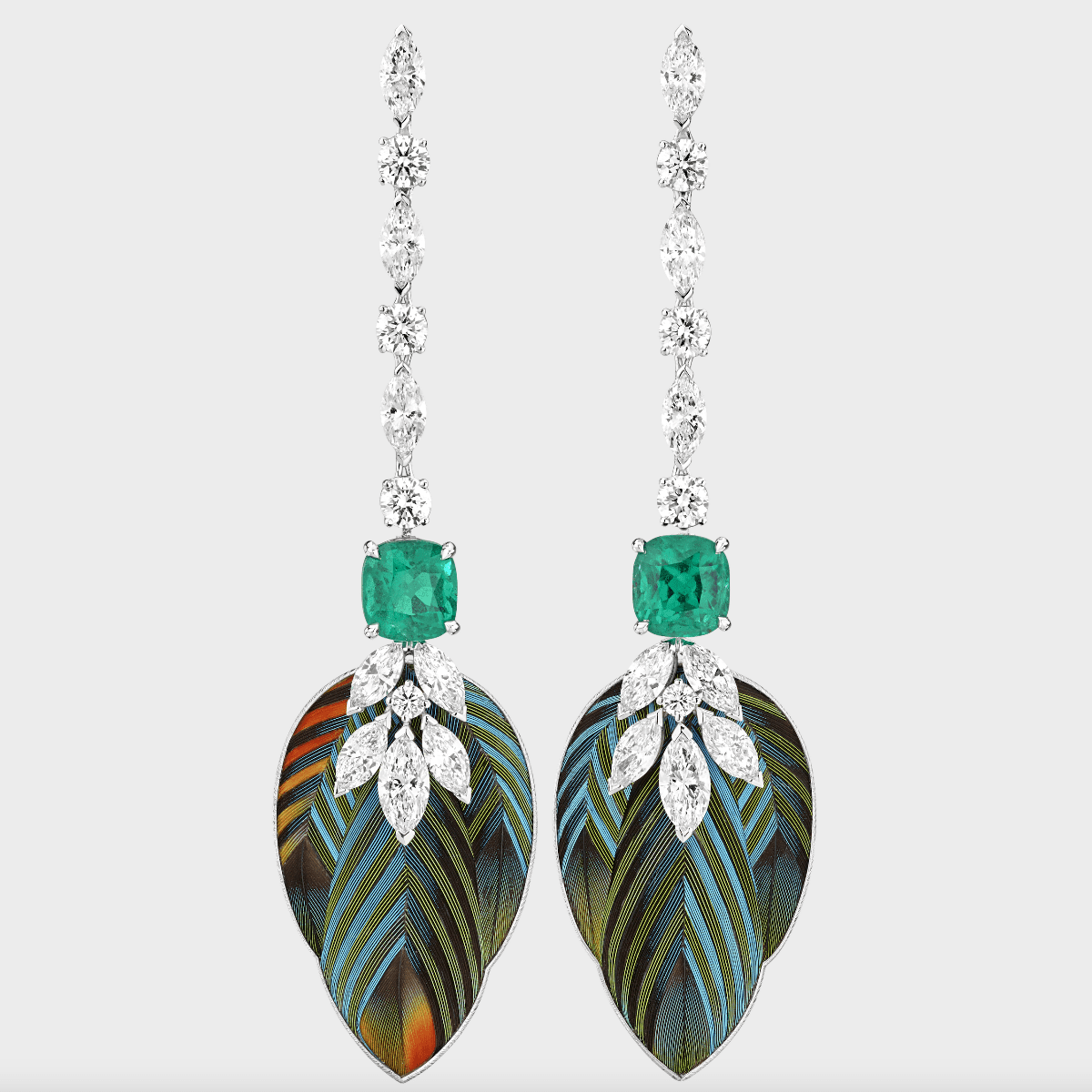
Events planned for 2021 :
- La nuit du rossignol, exhibition at the Philharmonie de Paris in March 2021,
- Poils, plumes et cheveux at the Maison des Arts d’Anthony in May 2021.
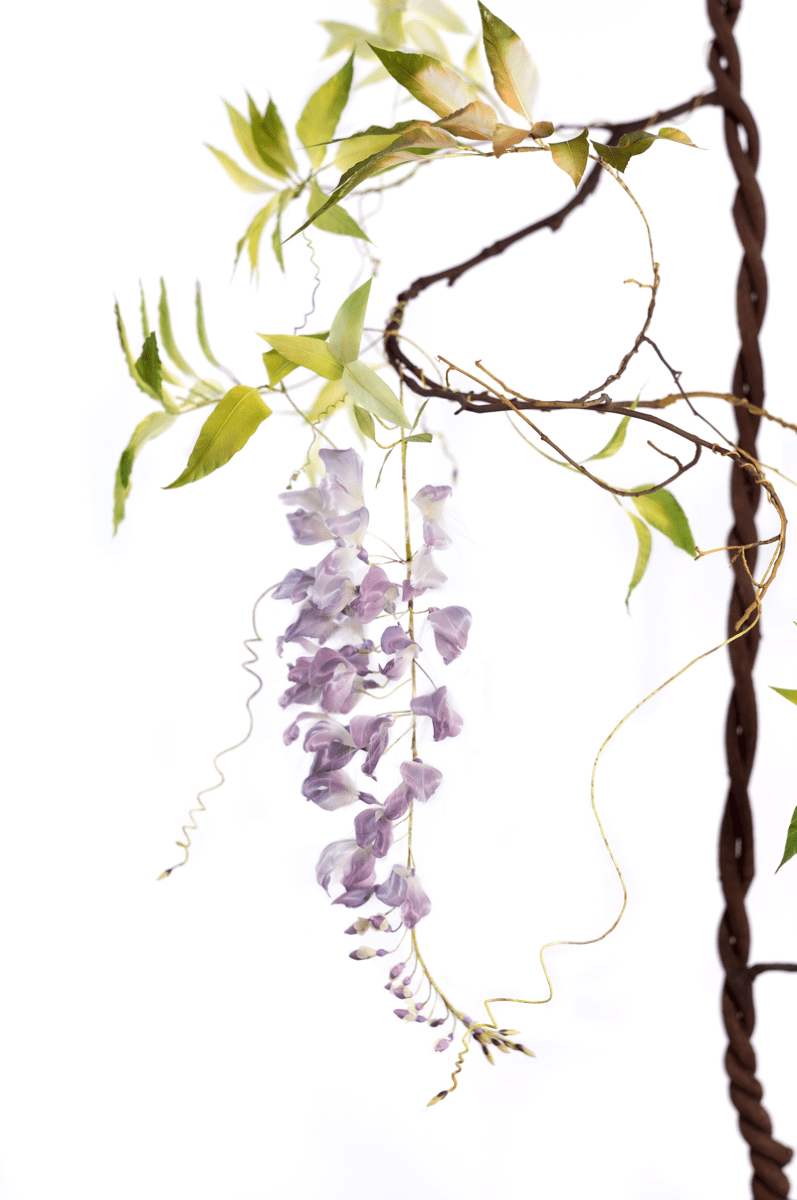
Wisteria — Transformed nature N°8 | Details | 2018 | Photo. Virginie Merle | Nelly Saunier©
Such metamorphoses make you daydream;
Nelly Saunier’s signature, the expression of her uniqueness,
is to surprise.
Extract from the la presentation of Transformed Nature series
HOMEMADE
PEPS & VITAMINS
Related episodes
Discover
CULTURAMA STUDIO
Editing team
- Barbara Marshall
- Grigoriy Manucharian
- José Man Lius
Contact us :
ericdeculturama@gmail.com
We wish to thank the volunteer contributors who cooperated in the creation of this webmagazine.
© Culturama.studio
